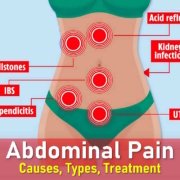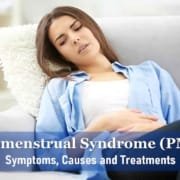Adenomyosis: Causes, Symptoms, Risk Factors and Treatments
Adenomyosis is a common but often misunderstood gynecological condition where the tissue lining the uterus, called the endometrium, grows into the muscular wall of the uterus (myometrium). This abnormal growth causes the uterus to enlarge, often leading to heavy menstrual bleeding and pelvic pain. While adenomyosis primarily affects women between 30 and 50 years old, it can occur in anyone who menstruates. Research suggests that about 20% of women may experience this condition, and many also have endometriosis, as the two conditions share overlapping symptoms.
What Is Adenomyosis?
In a healthy uterus, the endometrial lining thickens each month in preparation for pregnancy. If pregnancy doesn’t occur, this tissue sheds during menstruation. However, with adenomyosis, some of this endometrial tissue embeds itself into the uterine muscle. Despite being in the wrong place, it still responds to hormonal changes—thickening, breaking down, and bleeding just like normal endometrial tissue. This leads to inflammation, pain, and an enlarged uterus, often referred to as an adenomyosis uterus.

How Common is Adenomyosis?
Adenomyosis affects approximately 20-35% of women, though many cases go undiagnosed. It most frequently occurs in women aged 35-50 who have had children. Recent studies using advanced imaging techniques suggest the condition may be more prevalent than previously thought, with some research indicating up to 70% of women may show signs of adenomyosis when examined carefully. Despite its frequency, it remains one of the most commonly misdiagnosed gynecological conditions, often confused with endometriosis or fibroids.
Adenomyosis Risk Factors
While the exact cause remains unknown, several factors increase adenomyosis risk:
- Prior uterine surgery (C-sections, fibroid removal, D&C procedures)
- Multiple pregnancies (risk increases with each childbirth)
- Early menstruation (starting periods before age 12)
- Short menstrual cycles (less than 24 days)
- Endometriosis (about 40% of women with adenomyosis also have endometriosis)
What Causes Adenomyosis?
The exact cause of adenomyosis is not fully understood, but research suggests that certain factors may increase a woman’s likelihood of developing the condition. Adenomyosis occurs when endometrial tissue, which normally lines the inside of the uterus, grows into the muscular wall of the uterus (myometrium). This growth may be influenced by hormonal changes, uterine injury, or other underlying reproductive health conditions. While more studies are needed to pinpoint the precise cause, the following factors are known to raise the risk:
- Age: Adenomyosis is most commonly diagnosed in women aged 35 to 50. Symptoms often improve or disappear after menopause, when estrogen and other hormone levels naturally decline.
- Childbirth: Women who have experienced multiple pregnancies appear to be at a higher risk. Some experts believe that the uterine wall may be more vulnerable during pregnancy, allowing endometrial tissue to grow into the muscle layer during implantation or delivery.
- Prior Uterine Surgery: Surgical procedures such as cesarean sections (C-sections), fibroid removal (myomectomy), or dilation and curettage (D&C) can disrupt the natural boundary between the endometrium and myometrium. This may make it easier for endometrial cells to penetrate the uterine muscle.
- Early Menstruation: Starting menstrual periods before the age of 12 may increase the risk, possibly due to longer lifetime exposure to estrogen and repeated menstrual cycles.
- Short Menstrual Cycles: Women with cycles shorter than 24 days have more frequent periods, which could increase the chances of endometrial tissue migrating into the uterine muscle over time.
- Endometriosis: Approximately 40% of women with adenomyosis also have endometriosis, a related condition where endometrial-like tissue grows outside the uterus. While the two conditions are different, they may share similar underlying hormonal or immune system triggers.
It is important to remember that having one or more of these risk factors does not mean a woman will definitely develop adenomyosis. However, being aware of them can help with early recognition and timely medical evaluation if symptoms arise.
Common Adenomyosis Symptoms
Adenomyosis can affect women in different ways. Some experience only mild discomfort, while others face symptoms that disrupt daily routines, work, and relationships. The condition occurs when the tissue lining the uterus grows into its muscle wall, which can lead to both physical discomfort and emotional stress over time. Recognizing the symptoms early can help in seeking the right treatment and improving quality of life.
- Heavy or Prolonged Menstrual Bleeding (Menorrhagia): This is one of the most common symptoms. Periods may last longer than usual and the blood flow can be heavy enough to require changing pads or tampons more frequently, sometimes even at night. Over time, excessive bleeding can lead to anemia, which causes fatigue and weakness.
- Severe Menstrual Cramps (Dysmenorrhea): While many women experience cramps during their period, adenomyosis-related cramps can be more intense and longer-lasting. The pain may start a few days before bleeding begins and continue after the period ends.
- Pelvic Pain and Pressure: Some women describe this as a constant dull ache, heaviness, or pressure in the lower abdomen. The discomfort can be present throughout the month, not just during menstruation.
- Bloating or a Swollen Abdomen (Adenomyosis Belly): The uterus may enlarge due to the thickening of its walls, causing the lower belly to appear bloated or distended, even when weight has not changed.
- Pain During Intercourse (Dyspareunia): Inflammation and tenderness of the uterus can lead to discomfort or pain during or after sexual activity, which may affect intimacy and emotional well-being.
- Enlarged Uterus: In some cases, the uterus becomes noticeably larger, which can be detected during a pelvic examination or confirmed through imaging tests like ultrasound or MRI.
How Is Adenomyosis Diagnosed?
Diagnosing adenomyosis involves a combination of medical history review, physical exams, and imaging tests. Since symptoms often overlap with other conditions like endometriosis or fibroids, doctors use a step-by-step approach to confirm adenomyosis.
Physical Examination
The first step is a pelvic exam, where the doctor checks for an enlarged or tender uterus. In cases of adenomyosis, the uterus may feel softer or bulkier than normal. This initial assessment helps guide further testing.
Ultrasound Imaging
An adenomyosis ultrasound (transvaginal or abdominal) is often the next step. While ultrasounds may not always provide definitive results, they can reveal signs like:
- Thickening of the uterine wall
- Cysts within the muscle layer
- An asymmetrical uterus
Ultrasounds also help rule out other conditions, such as fibroids or ovarian cysts.
MRI Scans
For a clearer diagnosis, doctors may recommend a magnetic resonance imaging (MRI) scan. MRI provides detailed images of the uterine layers, showing exactly where endometrial tissue has invaded the muscle. This is especially useful for distinguishing adenomyosis from similar conditions.
Adenomyosis vs. Endometriosis vs. Fibroids: Key Differences
While adenomyosis vs endometriosis (or fibroids) share symptoms like pelvic pain and heavy bleeding, they are distinct conditions:
| Condition | Key Feature | Common Symptoms |
|---|---|---|
| Adenomyosis | Endometrial tissue grows into the uterine muscle | Heavy periods, painful cramps, enlarged uterus |
| Endometriosis | Endometrial tissue grows outside the uterus (e.g., ovaries, pelvis) | Chronic pelvic pain, pain during sex, infertility |
| Fibroids | Noncancerous tumors grow within the uterine wall | Pressure on the bladder, irregular bleeding, bulk symptoms |
Note: Some women have both endometriosis and adenomyosis, which can complicate diagnosis and treatment.
Potential Complications of Adenomyosis
Without proper treatment, adenomyosis can lead to complications that affect both physical health and quality of life. While not life-threatening, the condition can have a significant impact if symptoms are left unmanaged.
- Chronic anemia: Heavy and prolonged menstrual bleeding can cause iron levels to drop, leading to anemia. Symptoms may include constant fatigue, weakness, dizziness, pale skin, or in severe cases, fainting spells.
- Severe pain: Persistent pelvic pain or intense menstrual cramps can interfere with work, social activities, and personal relationships.
- Pregnancy challenges: Research suggests adenomyosis may affect fertility in some women, possibly due to inflammation or changes in the uterine wall that impact embryo implantation. It may also be linked to a higher risk of miscarriage, although many women still conceive successfully.
In extreme cases, prolonged heavy bleeding can cause hemoglobin levels to fall dangerously low, sometimes requiring blood transfusions or surgical intervention to stop the bleeding.
Adenomyosis and Pregnancy
The relationship between adenomyosis and pregnancy is complex, and studies have shown mixed results. While many women with adenomyosis conceive naturally and carry healthy pregnancies, others may face difficulties, particularly with assisted reproductive treatments like IVF. Experts believe that inflammation, hormonal imbalances, or reduced flexibility of the uterine wall could make implantation more challenging. However, with early medical guidance and personalized care, many women successfully achieve and maintain pregnancy.
Adenomyosis Treatment Options
Treatment is tailored to each woman’s symptoms, age, and reproductive plans. While there is no single cure that works for everyone, a variety of options can help control symptoms and improve quality of life. The choice of treatment depends largely on how severe the symptoms are and whether pregnancy is desired in the future.
Medication-Based Treatments
1. Hormonal Therapies
Hormonal treatments aim to control bleeding, reduce pain, and slow the growth of adenomyosis tissue. These are often the first line of management for mild to moderate symptoms.
- Birth control pills: Can regulate menstrual cycles, reduce heavy bleeding, and lessen cramps.
- Progesterone-releasing IUDs: Help thin the uterine lining and significantly decrease heavy bleeding, although full benefits may take 6–12 months.
- GnRH agonists: Temporarily lower estrogen levels, creating a menopause-like state that can shrink adenomyosis tissue and relieve symptoms. These are usually prescribed short-term due to side effects.
2. Non-Hormonal Options
For women who cannot or prefer not to use hormones, certain medications can help control bleeding and pain.
- Tranexamic acid: Taken only during menstruation to reduce blood flow without affecting hormones.
- NSAIDs: Such as ibuprofen or naproxen, which help reduce menstrual cramps and pelvic inflammation when taken before or at the start of bleeding.
Surgical Treatments
1. Hysterectomy
Removing the uterus is the only definitive cure for adenomyosis. Unlike fibroids, adenomyosis cannot be cleanly removed from the uterine muscle because it is spread throughout the wall. Hysterectomy may be recommended for women with severe symptoms who do not wish to preserve fertility.
- Abdominal hysterectomy: Performed through a larger incision, often used when the uterus is very enlarged.
- Laparoscopic hysterectomy: Minimally invasive, with smaller incisions and faster recovery.
- Vaginal hysterectomy: Removal of the uterus through the vaginal canal, possible for some women depending on uterus size and overall health.
2. Endometrial Ablation
This procedure destroys the uterine lining to reduce menstrual bleeding. However, it is generally not recommended for adenomyosis because the condition extends into the muscle layer, which ablation does not treat. Some women may have temporary relief, but symptoms often return.
Living with Adenomyosis
While there is no universal cure, many women successfully manage adenomyosis through a combination of medical care and lifestyle adjustments.
- Diet and lifestyle changes: Some find symptom relief by following an anti-inflammatory diet, staying physically active, and managing stress.
- Pain management techniques: Heat therapy, gentle stretching, pelvic floor physiotherapy, or alternative approaches like acupuncture may help reduce discomfort.
- Support networks: Joining online or in-person support groups can provide emotional comfort, coping strategies, and encouragement from others with similar experiences.
Although symptoms often improve after menopause, there is no need to wait years for relief. Many women find that with the right treatment combination, daily life becomes far more manageable and fulfilling.
When to See a Specialist
Seek advice from a healthcare professional experienced in adenomyosis if:
- Your menstrual bleeding is heavy enough to interfere with normal activities or cause fatigue.
- You have symptoms of anemia, such as lightheadedness or extreme tiredness.
- Pain medications no longer control your symptoms.
- You are concerned about fertility or planning a pregnancy.
With early diagnosis and the right management plan, most women with adenomyosis can reduce their symptoms, protect their reproductive health, and enjoy a better quality of life.
Final Thoughts
Living with adenomyosis can be challenging, but today’s treatment options – from adenomyosis medication to advanced surgical techniques – offer real hope. While the condition may affect your quality of life, it doesn’t have to define it. With proper diagnosis and care, most women achieve significant symptom relief. If you suspect you have adenomyosis, don’t hesitate to seek medical advice. Early intervention can prevent complications like anemia and help you regain control of your health and wellbeing. Remember, your symptoms are valid, and effective adenomyosis treatments are available.
FAQs About Adenomyosis
What’s the difference between adenomyosis vs endometriosis?
While both involve endometrial tissue growing where it shouldn’t, adenomyosis occurs when this tissue grows into the uterine muscle wall, whereas endometriosis involves growth outside the uterus entirely (like on ovaries or fallopian tubes). Many women have both conditions simultaneously.
Can adenomyosis turn into cancer?
No, adenomyosis is a benign condition. While some adenomyosis symptoms like heavy bleeding may resemble uterine cancer, the conditions are unrelated. However, always consult your doctor about any unusual bleeding patterns.
Is there a natural cure for adenomyosis?
While no natural remedy eliminates adenomyosis, many women manage symptoms through anti-inflammatory diets, acupuncture, or supplements like turmeric and omega-3s. These approaches work best when combined with medical treatments.
Can you get pregnant with adenomyosis?
Yes, many women with adenomyosis conceive naturally, though some may face challenges. Treatment with GnRH agonists before IVF may improve success rates. An adenomyosis specialist can create a personalized fertility plan.










